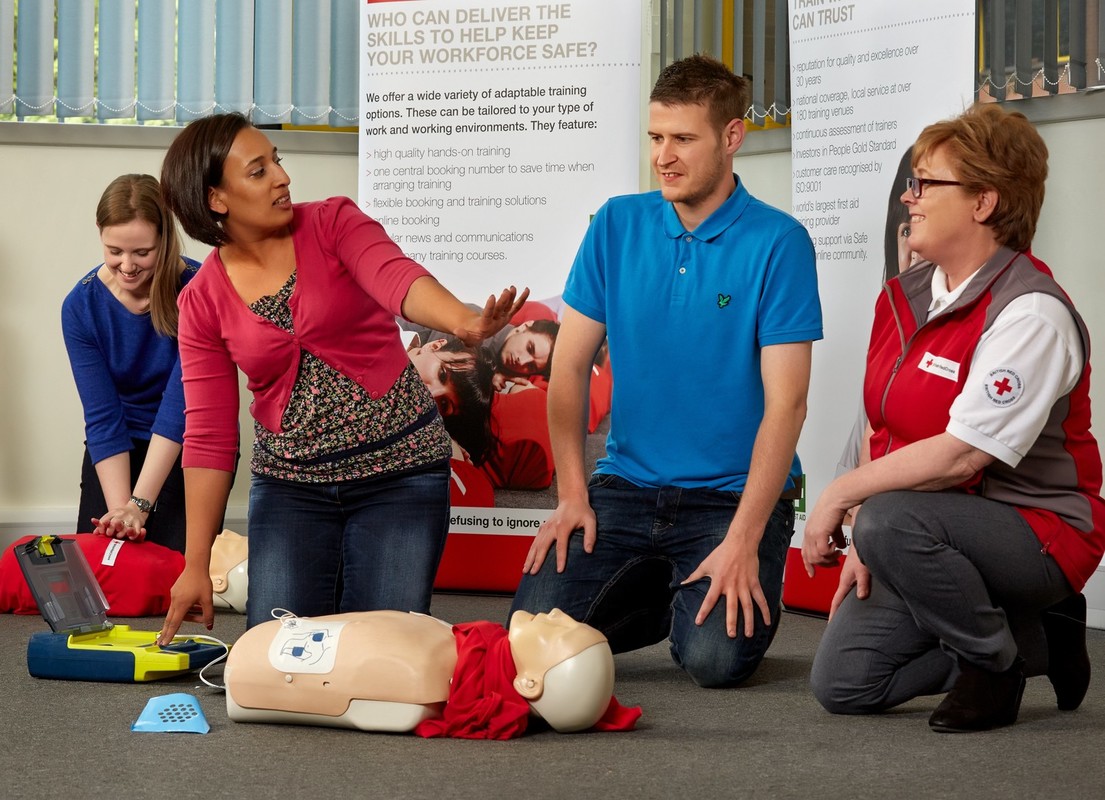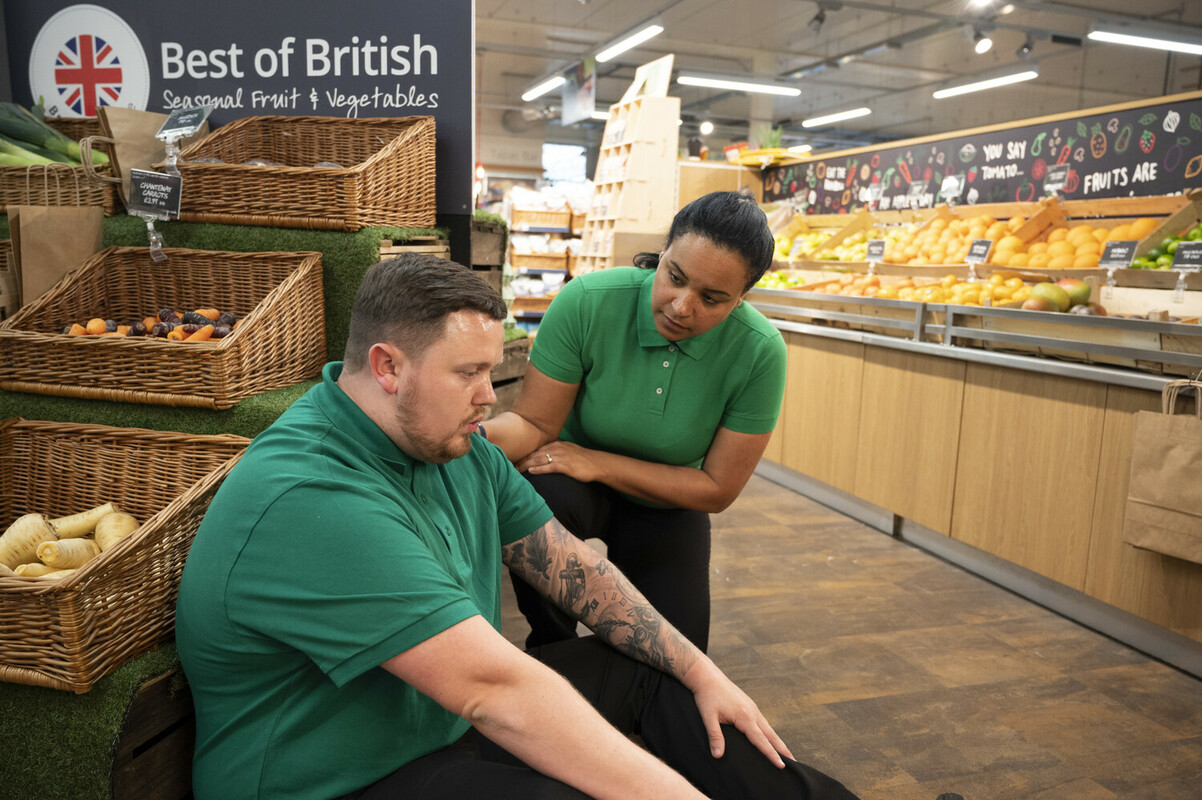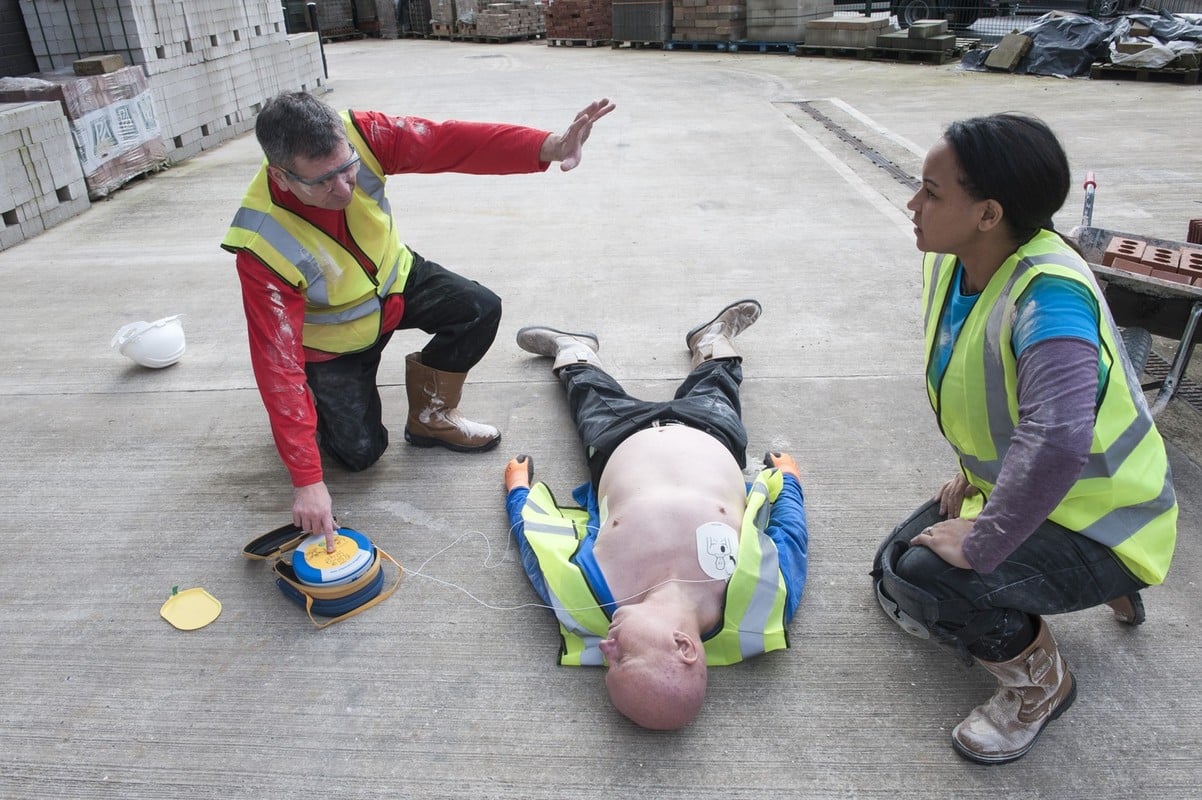If you’re an employer, you’ll probably already know you have overall responsibility for first aid in the workplace. It’s a vital task that needs to be done well. Sadly, according to the Health & Safety Executive (HSE), 123 people were killed in work-related accidents during 2021/22. A further 565,000 were injured.
While most employers do what they can to make the workplace as safe as possible, injuries and illnesses do happen. Having the right first provision in place can save lives, whether someone is hurt or they suffer from a medical emergency such as a heart attack, stroke or severe allergic reaction.
First aid regulations are important because they help employers provide adequate and suitable first aid provision. That said, many employers aren’t quite sure how to meet these regulations. In this article, we help you navigate them and make it easier for your business to comply.
Train with a name you can trust
Use our course finder and discover the right first aid training to equip your staff with the knowledge to handle workplace emergencies.
What do first aid regulations require employers to do?
To understand your first aid responsibilities as an employer, your first port of call is The Health and Safety (First-Aid) Regulations 1981
On the face of it, the legislation isn’t too complex.
For example, two of the key actions employers need to take are:
1. Provide “such equipment and facilities as are adequate and appropriate in the circumstances for enabling first-aid to be rendered to his employees if they are injured or become ill at work.”
2. Provide “such number of suitable persons as is adequate and appropriate in the circumstances for rendering first-aid”.
As is often the case with legislation, interpretation is everything. What counts as ‘adequate and appropriate’? Who is a ‘suitable person’, and how do you calculate how many first aiders you need?
The regulations are clear that compliance depends on the nature of your business, how many employees you have, and the location of your premises. For example, a busy construction site will need more comprehensive first aid provision than a small accountancy firm with six office-based employees. While the regulations are a good starting point, they only offer you a guide of the first aid provision your specific business will need. To fill this gap, we've developed a new ebook ‘First Aid Provision in the Workplace: A guide for businesses’ helping to explain all the key information you need to know. It also contains some useful tools and templates to help you assess your own workplace first aid needs.

HSE first aid guidance for employers
The Health and Safety Executive’s detailed guidance on the first aid at work regulations is not a quick read, but it’s simply written and highly informative. If you’re responsible for first aid in your workplace, it’s essential that you take time to get familiar with it.
While it’s no substitute for reading the guidance, we’ve broken it down into key points so you can get a good overview of employer responsibilities.
What are the three types of first aiders?
Before we start, it would be helpful to know the three types of first aiders that are referred to in the regulations. This will help you ensure you arrange the right training to meet your organisation’s needs.
In brief, the three main types of first aid personnel are:
• An appointed person. Someone responsible for taking charge of first-aid arrangements (they don’t need to be a trained first aider, but we recommend at least one person is).
• An EFAW trained first aider. This is a person who has completed an Emergency First Aid at Work qualification.
• A FAW trained first aider. This is a person who holds a First Aid at Work qualification. They learn skills that allow them to deliver first aid in a wider range of circumstances that someone with an EFAW qualification
Unsure which type of first aider you need?
Use our course finder tool and discover which course, and which type of first aider, your business needs to be compliant.
First aid needs assessment
First aid needs assessments are the cornerstone of complying with the regulations. These assessments help you to work out what is ‘adequate and appropriate’ provision. They can also help you decide how many first aiders you require, plus the level of training they need.
Before getting started on a needs assessment, the key thing to remember is that first aid provision needs to be tailored to the needs of your workplace and your employees.
This isn’t an exhaustive list, but some of the key factors a first aid needs assessment should consider include:
• The type of work done and workplace hazards and risks.
• The nature, size and distribution of your workforce.
• Work patterns, travel, remote and lone workers.
• Distance from emergency medical service (i.e. the likely response time).
• Leave / absences of first aiders and appointed persons.
It’s worth bearing in mind that, depending on your business premises, you may need to do more than one first aid needs assessment. A good example would be a factory with associated offices: you’d need to do a thorough assessment for each working environment.
Your completed first aid needs assessment will help you identify where you need additional provision. For example, if your building has several levels, you may decide to provide first aid kits on each floor. If you have employees with a history of heart problems, you could decide to install a defibrillator (this is a good idea, regardless). When your workplace uses hazardous chemicals or processes, you will want to provide more extensive first aid equipment, potentially specialised training and also notify the emergency services about the nature and location of the work.
Choosing the right number of first aiders
One key thing a needs assessment will help you decide is how many first aiders and appointed persons you’ll need to comply with the first aid at work regulations.
To help you, the HSE guidance to the first aid regulations suggests the minimum number of first-aid personnel that should be available at all times.
In a nutshell, these are as follows:
1) Low risk environments (shops, offices, etc).
• Under 25 employees: 1 appointed person.
• 25-50 employees: 1 EFAW (Emergency First Aid at Work) trained first-aider.
• 50+ employees: 1 FAW (First Aid at Work) trained first-aider for every 100 employed (and part thereof).
2) Higher hazard environments (think engineering, construction, production lines and work with chemicals or machinery).
• Under 5 employees: 1 appointed person.
• 5-50 employees: 1 EFAW trained first-aider.
• 50+ employees: 1 FAW trained first-aider for every 100 employed (and part thereof).
When undertaking your first aid needs assessment, you need to tailor the number of first aiders to the size and nature of your workplace. For example, if you have workers with disabilities or specific health problems, you will want to make sure you have enough first aiders trained to deal with these. Similarly, if your premises are a significant distance from the emergency services, it would be wise to have additional trained people.

Choosing and training your first aiders
We’ve written a short guide to choosing an appointed person or first aider.
If you take a look, you’ll see that we recommend selecting employees using these criteria:
• Willingness: people who will enjoy and take pride in the role.
• Personality: those who are calm and confident to cope with emergencies.
• Reliability: employees who are available and reachable when needed.
• Ability: people who are physically able to carry out the role.
Once you’ve chosen your first aiders, they need to undergo the right training. Since 2013, the HSE no longer approves first-aid training providers. Although the HSE does publish guidelines on selecting a training provider, it’s up to employers to make sure they are competent and deliver training to the right standard.
Tips for choosing the right first aid training
While the HSE first aid guidelines suggest minimum numbers of first aiders with particular types of training, it’s always a good idea to go further. The more first aiders you have – and the more thorough their training – the safer your workplace will be.
For example, even if you’re only required to have Emergency First Aid at Work trained first aiders, if you also have people with a 3-day First Aid at Work qualification they’ll be able to respond to a wider range of situations. This can be lifesaving. Similarly, your needs assessment may highlight the need for more specialist training. If children regularly visit your workplace, make sure that you have staff who are trained in paediatric first aid. It’s also a good idea to help trained people keep their knowledge fresh and up to date via an annual half-day first aid requalification course.

The British Red Cross can deliver all these types of training, as well as annual skills updates to keep your first aiders’ knowledge fresh. With 40 years’ experience of delivering quality first aid training, we’re recognised by the HSE as a leading provider.
We are the trusted brand used by thousands of UK customers
Get compliant and find your perfect first aid course today by using our course finder tool.
Complying with the first aid regulations - key takeaways
While the first aid at work regulations can seem complex, taking a structured approach can help you comply with them more easily. The key element in compliance is always a thorough and regularly repeated first-aid needs assessment, which (in conjunction with HSE guidance) can help you determine what provision you need, including how many appointed persons or first aiders you need.
When it comes to training first aiders, it’s essential to choose a provider that can deliver training to the highest standard. To help you, British Red Cross Training offers courses that can be tailored to the needs of your company, whether it’s a small business or a major corporation.
Depending on the course, we can offer both face-to-face or online training. So, if you need trained personnel to fulfil your needs assessment and comply with the first-aid regulations, get in touch today.
Topics: First Aid






